 We had our hands on the Sony Alpha A100 last week, Sony’s first step into the Digital SLR (dSLR) market.
We had our hands on the Sony Alpha A100 last week, Sony’s first step into the Digital SLR (dSLR) market.
We’ve known for a while that Sony and Konika/Minolta would be producing a dSLR, following Sony’s purchase of the traditional SLR company. The A100 is the first product of the deal.
Sony tell us that they see the market for dSLR’s growing by 30% over the next year, which is lucky as the compact digital market appears to be stagnating. They’ve got grand plans for this market, with their stated ambition to be ‘challenging for the top position’ by 2008.
The key message from Sony with the whole of the Alpha range is “We want to make you a better photographer.” Highly appealing to those who may be scared off by crossing over from a compact camera to the SLR world.
 What’s Hot
What’s Hot
Sony have brought their own CCD technology to the party, giving a 10Mpx image, but it’s not full-frame (the sensor isn’t the size of a full 35mm film frame). They’ve combined this new CCD with anti-shake features seen on the Konica Minolta Dynax/Maxxum 5D, which stabilises the sensor instead of the lens element. Sony have labeled this Super SteadyShot.
The new Bionz image processor also adds a lot like the Dynamic Range Optimiser, which balances light levels between subject and background when taking photos into the light from a dark place.
A feature brought over from the Konika/Minolta includes EyeStart. Two sensors just below the viewfinder detects when the camera is brought to the eye and prepare the camera to start shooting.
As with previous cameras, Sony are working with Carl ZeissThe SLR lenses from Konika/Minolta will fit the A100, so the brave might be able to pick up a bargain or two buying them second-hand, quite likely when there have been 16 million of them sold worldwide.
 First impressions
First impressions
These are all based on the brief time we had with it. We plan to do a more in-depth review in a few weeks time.
First impressions are that of a quality camera. The battery grip is solid and comfortable, giving the impression that handling it over an extended period wouldn’t be tiresome.
The materials used vary over the body depending on the function and need. It’s with interest that we saw that the material around the shutter button was highly reflective providing a good feel, and we assume, reducing the risk of the area wearing excessively.

Sony Alpha A100 test shot – See the whole set at original resolution
When taking photos, small things like the solid sound that the shutter makes after you press the shutter button, as it raises out of the way to expose the CCD, also reassures you that it’s quality.
On the back of the body is a 2.5″ Clear Photo LCD which provides a very wide viewing angle, useful for showing off your recently taken shots. We can also confirm that Sony’s efforts to make the screen viewable in sunlight have been successful.
Sony claim that all of the commonly used functions are placed on dials, close to hand on the body, rather than burying it within on-screen menus.
Showing that the camera is a transition between Konika/Minolta and Sony, the storage on the camera is the size of compact flash. Not wanting to appear lacking in their support for their own format, Sony provide a converter to support Memory Stick.

Sony Alpha A100 test shot – See the whole set at original resolution
The lenses that come with it, especially when the two pack is considered, give good value, but as is so often the case with bundled lenses, we wonder if these will be cast aside after a short time. Although appearing to be competent, small differences from after-market lenses like the mountings being plastic, not metal, give pointers to the build quality.
Our only reservation is over the quality of the photos taken. Initially they looked great, but when zoomed to full screen we were alarmed to see the pixilation of the image. We’re not sure if this was down to the camera we used being on some strange settings or if the camera has a problem. We’ll know more when we get our hands on it for a longer period.

Sony Alpha A100 test shot – See the whole set at original resolution
Pricing and availability
The Alpha A100 is keenly priced
£599.99 – Body only
£699.99 – Body and 18-70 Lens
£849.99 – Body,18-70 and 75-300 Lenses
Sony are quoting that the whole kit and caboodle will be available in July 2006.
 If watching the World Cup on TV, online or down the pub wasn’t enough, Microsoft can help you stay up to date with goal-by-goal action.
If watching the World Cup on TV, online or down the pub wasn’t enough, Microsoft can help you stay up to date with goal-by-goal action. If you specify an RSS feed (Digital-Lifestyles, natch), the headlines from these are intermittently scrolled along the bottom too.
If you specify an RSS feed (Digital-Lifestyles, natch), the headlines from these are intermittently scrolled along the bottom too.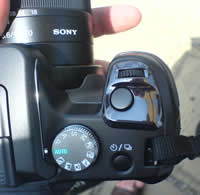 We had our hands on the Sony Alpha A100 last week, Sony’s first step into the Digital SLR (dSLR) market.
We had our hands on the Sony Alpha A100 last week, Sony’s first step into the Digital SLR (dSLR) market.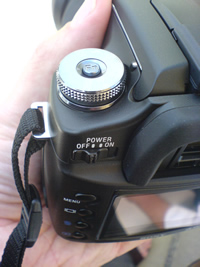 What’s Hot
What’s Hot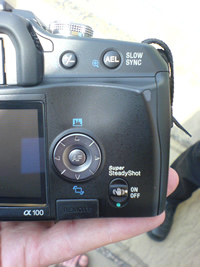 First impressions
First impressions


 Think carefully the next time you edit your Flickr or Myspace profile.
Think carefully the next time you edit your Flickr or Myspace profile.  In September 2005 the European Commission adopted a proposal that would see telecommunications data held for one year and Internet data for six months and, last month, the European Court annulled the agreement which compelled airlines to submit private data on passengers flying to the US.
In September 2005 the European Commission adopted a proposal that would see telecommunications data held for one year and Internet data for six months and, last month, the European Court annulled the agreement which compelled airlines to submit private data on passengers flying to the US. Saturday saw anti-DRM protests at eight Apple stores across the USA organised by DefectiveByDesign, who are running an on-going ‘Campaign to Eliminate DRM.’
Saturday saw anti-DRM protests at eight Apple stores across the USA organised by DefectiveByDesign, who are running an on-going ‘Campaign to Eliminate DRM.’ List of Apple stores affected
List of Apple stores affected Word is spreading that the long-antcipated integration of Skype into eBay’s auction site is close at hand.
Word is spreading that the long-antcipated integration of Skype into eBay’s auction site is close at hand. Skype recently introduced Skypecasting, the ability to broadcast to up to 100 Skype users. While it’s being used for a wide variety of innovative application such as learning of languages and small music concerts, we see the eBay-centric usage being live auctions.
Skype recently introduced Skypecasting, the ability to broadcast to up to 100 Skype users. While it’s being used for a wide variety of innovative application such as learning of languages and small music concerts, we see the eBay-centric usage being live auctions. What’s the difference between a Wikia and a Wikipedia? Trivia, mostly – but also, Gil Penchina (pictured below). Penchina has spent eight years running eBay as a general manager and told me it was “like a whole career with any ordinary company, and I want to stop.”
What’s the difference between a Wikia and a Wikipedia? Trivia, mostly – but also, Gil Penchina (pictured below). Penchina has spent eight years running eBay as a general manager and told me it was “like a whole career with any ordinary company, and I want to stop.” But a little roaming around exposes the difference: it’s a “community thing.” According to the Astronomy Wikia, “The wiki was started with a focus specifically on topics related to the Mid Atlantic Star Party and will include reports from MASP attendees.”
But a little roaming around exposes the difference: it’s a “community thing.” According to the Astronomy Wikia, “The wiki was started with a focus specifically on topics related to the Mid Atlantic Star Party and will include reports from MASP attendees.” Why would you do that? In Gil’s view of the future, of course, it would be to prevent the more serious Wikipedia from being cluttered with Buffy trivia.
Why would you do that? In Gil’s view of the future, of course, it would be to prevent the more serious Wikipedia from being cluttered with Buffy trivia.  The dream of effortless – and easy to see – mobile Web surfing has taken a step forward with the release of Nokia’s N80 smartphone. The new device is rapidly garnering praise for its stunning screen which takes the stress out of Web browsing and picture viewing.
The dream of effortless – and easy to see – mobile Web surfing has taken a step forward with the release of Nokia’s N80 smartphone. The new device is rapidly garnering praise for its stunning screen which takes the stress out of Web browsing and picture viewing.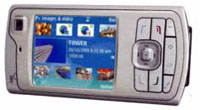 The increased density of the display makes the interface more crisp and easier to read and Nokia have taken advantage of this by utilizing vector graphics to sharpen up icons and fonts, reducing the blockiness associated with lower resolution devices.
The increased density of the display makes the interface more crisp and easier to read and Nokia have taken advantage of this by utilizing vector graphics to sharpen up icons and fonts, reducing the blockiness associated with lower resolution devices.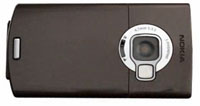 The N80 is pretty sharp on taking pictures too. With a 3.2 megapixel camera built-in, the N80 can deliver stills at 2048 x 1536 pixels, substantial enough to challenge regular digi cameras. Video recording is good at 352 x 288, the same resolution as the N70 and N90, and a VGA camera is mounted on the front for video calls.
The N80 is pretty sharp on taking pictures too. With a 3.2 megapixel camera built-in, the N80 can deliver stills at 2048 x 1536 pixels, substantial enough to challenge regular digi cameras. Video recording is good at 352 x 288, the same resolution as the N70 and N90, and a VGA camera is mounted on the front for video calls. There’s mutterings of some discontent around MySpace, the insanely popular social site.
There’s mutterings of some discontent around MySpace, the insanely popular social site.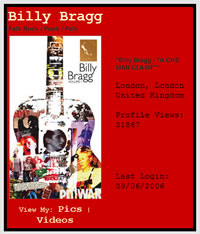 The original Bragg posting was made back in mid-may, but was highlighted when it was picked up by the
The original Bragg posting was made back in mid-may, but was highlighted when it was picked up by the 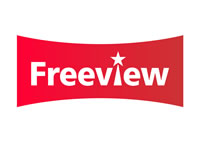 We wouldn’t normally bore you with tales of how many more percent of the UK population have joined the Digital TV-owning army, but this one is a significant one.
We wouldn’t normally bore you with tales of how many more percent of the UK population have joined the Digital TV-owning army, but this one is a significant one. TV over ADSL First
TV over ADSL First Additional TV Sets – Ongoing problems
Additional TV Sets – Ongoing problems Mobile phone companies have been striving to develop high resolution displays to capitalise on the potential of multi-media content. This week, Samsung joined the growing list of manufacturers who have created a true VGA display suitable for mobile phones.
Mobile phone companies have been striving to develop high resolution displays to capitalise on the potential of multi-media content. This week, Samsung joined the growing list of manufacturers who have created a true VGA display suitable for mobile phones. VGA has been available on handheld devices for a while now. Toshiba debuted the first PDA with VGA display (the e805) back in December 2003 and the first VGA mobile, Sharp’s 904SH, launched in Japan in April this year. The latter has four times the resolution of the average QVGA (Quarter VGA) display and face recognition functions that authenticates users by their facial features.
VGA has been available on handheld devices for a while now. Toshiba debuted the first PDA with VGA display (the e805) back in December 2003 and the first VGA mobile, Sharp’s 904SH, launched in Japan in April this year. The latter has four times the resolution of the average QVGA (Quarter VGA) display and face recognition functions that authenticates users by their facial features.